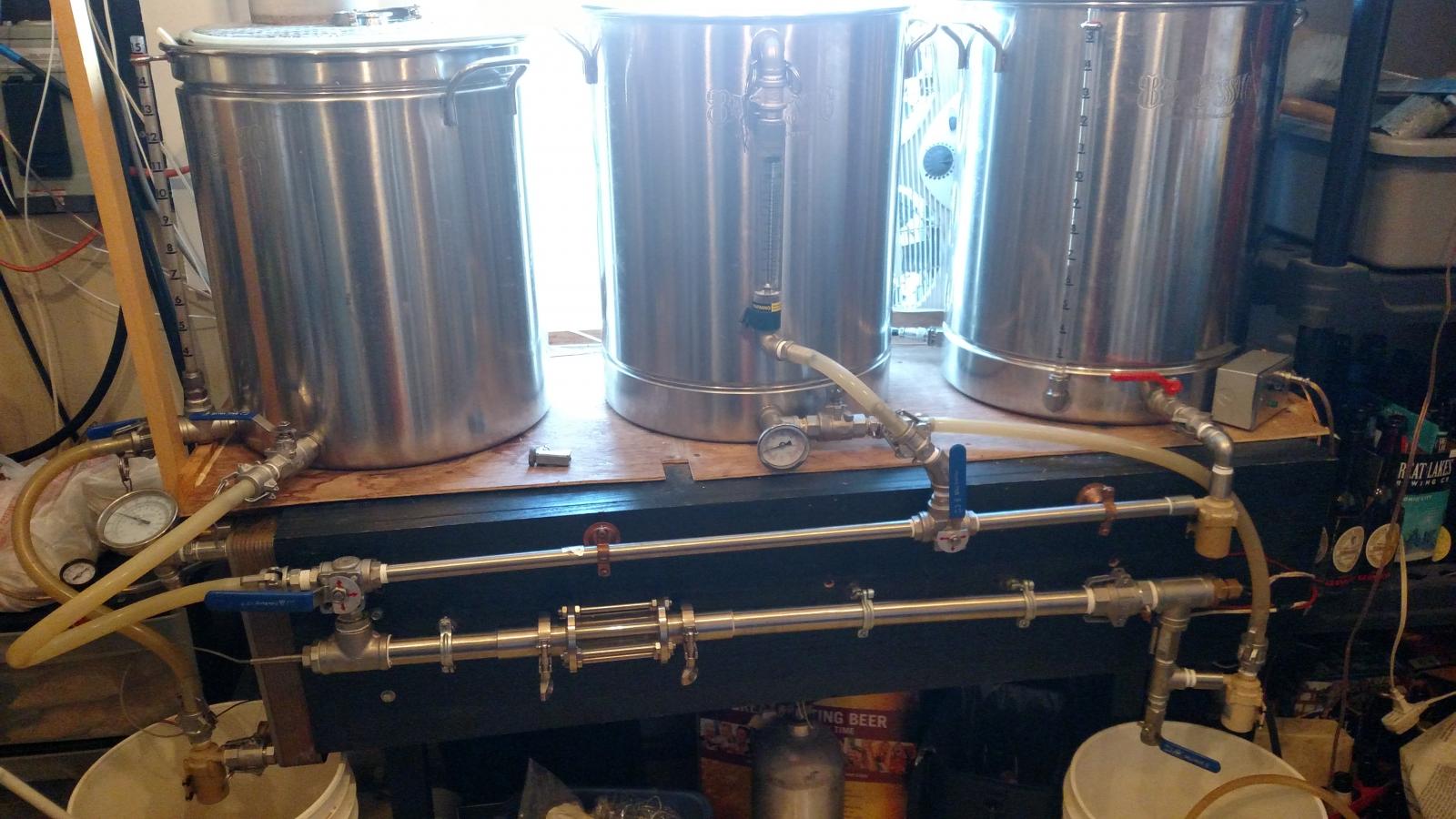jonathonhagerty
Member
- Joined
- Apr 10, 2019
- Messages
- 23
- Reaction score
- 3
Hi Brundog. Thanks for taking a look. You have a great website on automation, and a great reputation on this site. I automate for a living, and damn! Good job.
When I tested vertically, the probe detected the peak temperature, and the actual exit temp (sparge tube in the MT) was lower. Lower than the probe temp. Am I just fighting a losing battle here with stratification? Will some stainless wire really unify a 15F delta? It'd have to be some thick wire. Does your quadzilla's baffles have some thick fins?
Thanks, she's rockin my world. Doesn't matter how my day went, it's amazing hanging with them afterwards.
When I tested vertically, the probe detected the peak temperature, and the actual exit temp (sparge tube in the MT) was lower. Lower than the probe temp. Am I just fighting a losing battle here with stratification? Will some stainless wire really unify a 15F delta? It'd have to be some thick wire. Does your quadzilla's baffles have some thick fins?
Thanks, she's rockin my world. Doesn't matter how my day went, it's amazing hanging with them afterwards.
Last edited:

















































![Craft A Brew - Safale S-04 Dry Yeast - Fermentis - English Ale Dry Yeast - For English and American Ales and Hard Apple Ciders - Ingredients for Home Brewing - Beer Making Supplies - [1 Pack]](https://m.media-amazon.com/images/I/41fVGNh6JfL._SL500_.jpg)









